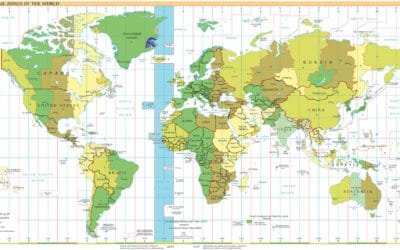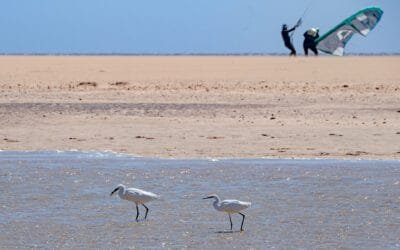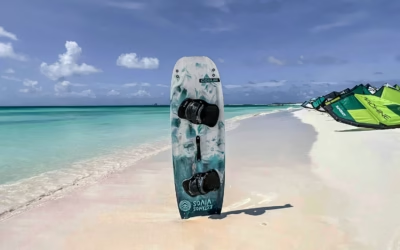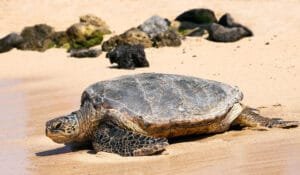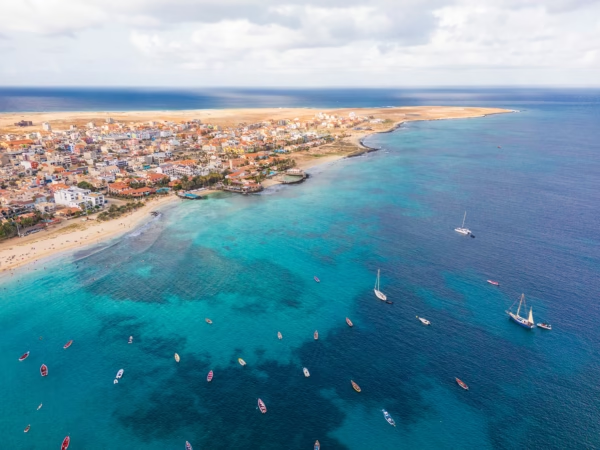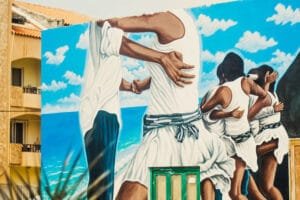The Best Tourist Attractions of Sal Island: Complete Guide
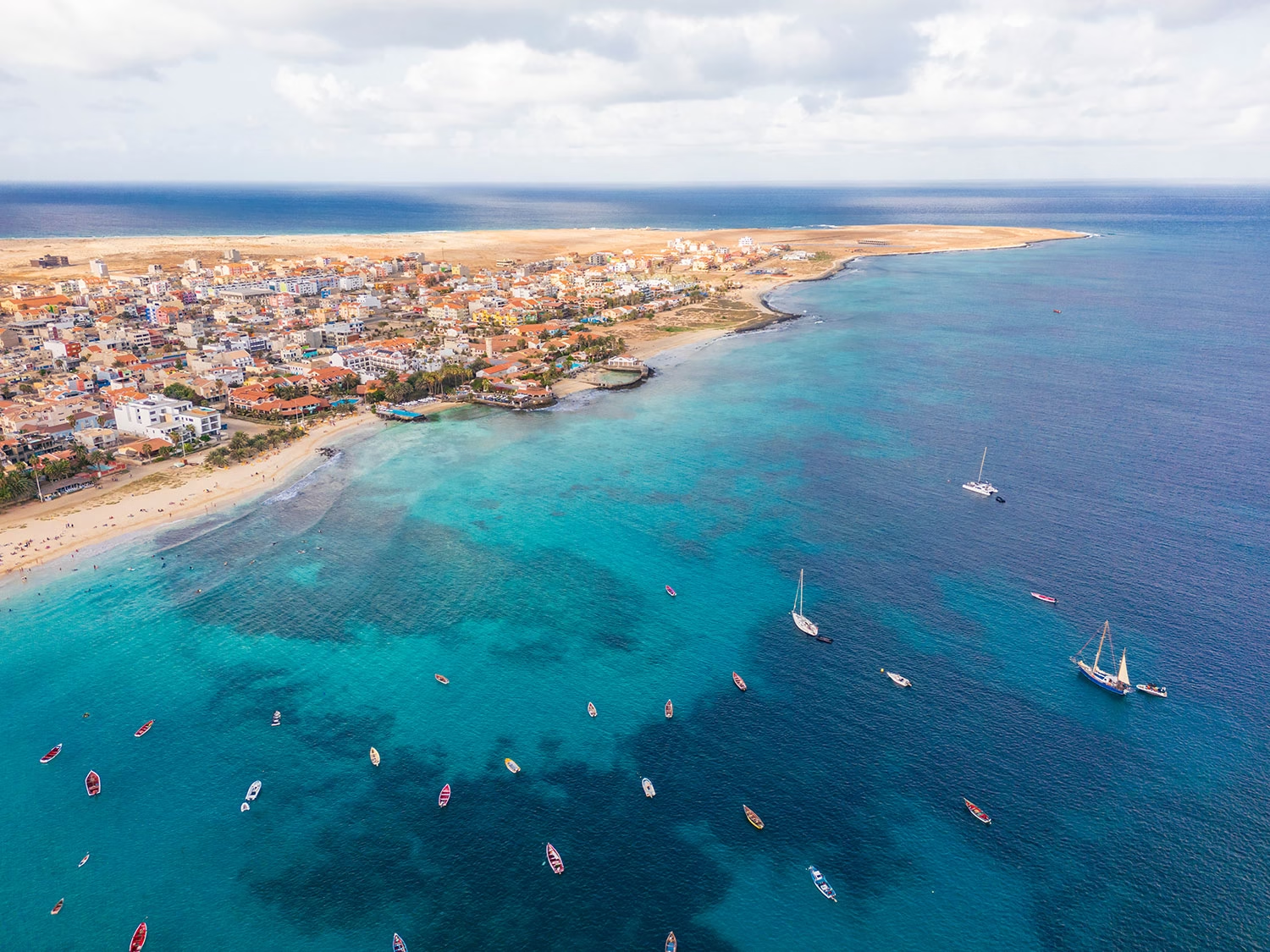
Sal Island has become one of the Atlantic’s most appealing destinations for active travellers, thanks to its blend of water sports, outdoor adventures, and relaxed leisure options. The island is particularly renowned for kitesurfing and windsurfing, with world-class conditions at Kite Beach, Ponta Preta, and Santa Maria, while surfing, bodyboarding, paddleboarding, jet-skiing, diving, snorkelling, deep-sea fishing, turtle-watching and whale-watching excursions are also widely available.
On land, visitors can enjoy quad biking, off-road buggy tours, horse riding, cycling, and hiking through the island’s lunar-like landscapes, volcanic craters and salt flats. Those seeking relaxation can unwind on the golden sands of Santa Maria Beach, visit the natural salt pools at Pedra de Lume, or explore the island’s cultural side in Espargos and the fishing village of Palmeira.
For nature enthusiasts, there are turtle-watching tours (July to October), birdwatching around the salt pans, snorkelling and diving, botanical gardens and guided trips to Shark Bay or the Blue Eye cave at Buracona.
Combined, these experiences make Sal a versatile destination where sport, nature, and leisure blend seamlessly.
Water Sports
Kitesurfing
Between October and June, Sal becomes a hub for kitesurfing. Three hundred fifty days of kiteable conditions annually, winds averaging 15-30 knots, and water temperatures that never drop below 21°C make Sal perfect for kiters. Santa Maria Bay stretches for three kilometres, with designated zones keeping kitesurfers and windsurfers from tangling lines.
Kite Beach, five minutes from Santa Maria, serves as ground zero for the sport. The spot works for all levels — beginners practice in the flat water near shore, while advanced riders head out to the clean, breaking waves. Schools cluster here, charging €70-100 for beginner lessons and €300-500 for week-long packages. Most provide equipment, although rentals cost €50-80 per day for solo travellers.
Ponta Preta is different. This world-famous break produces waves up to six meters high, breaking just 50 meters from shore. Only experts attempt it. During competitions, crowds gather on the beach to watch riders launch off massive waves. Between December and April, when Atlantic swells peak, the entire west coast activates with spots like Ponta Sino and Canoa offering varying degrees of difficulty.
The wind patterns on the island are remarkably consistent. Morning sessions typically offer lighter winds, ideal for learning. By afternoon, conditions intensify. Instructors are familiar with this rhythm and schedule lessons accordingly. A 3mm shorty wetsuit handles most situations, although many riders opt to go without it during the summer months when water temperatures reach 26°C.
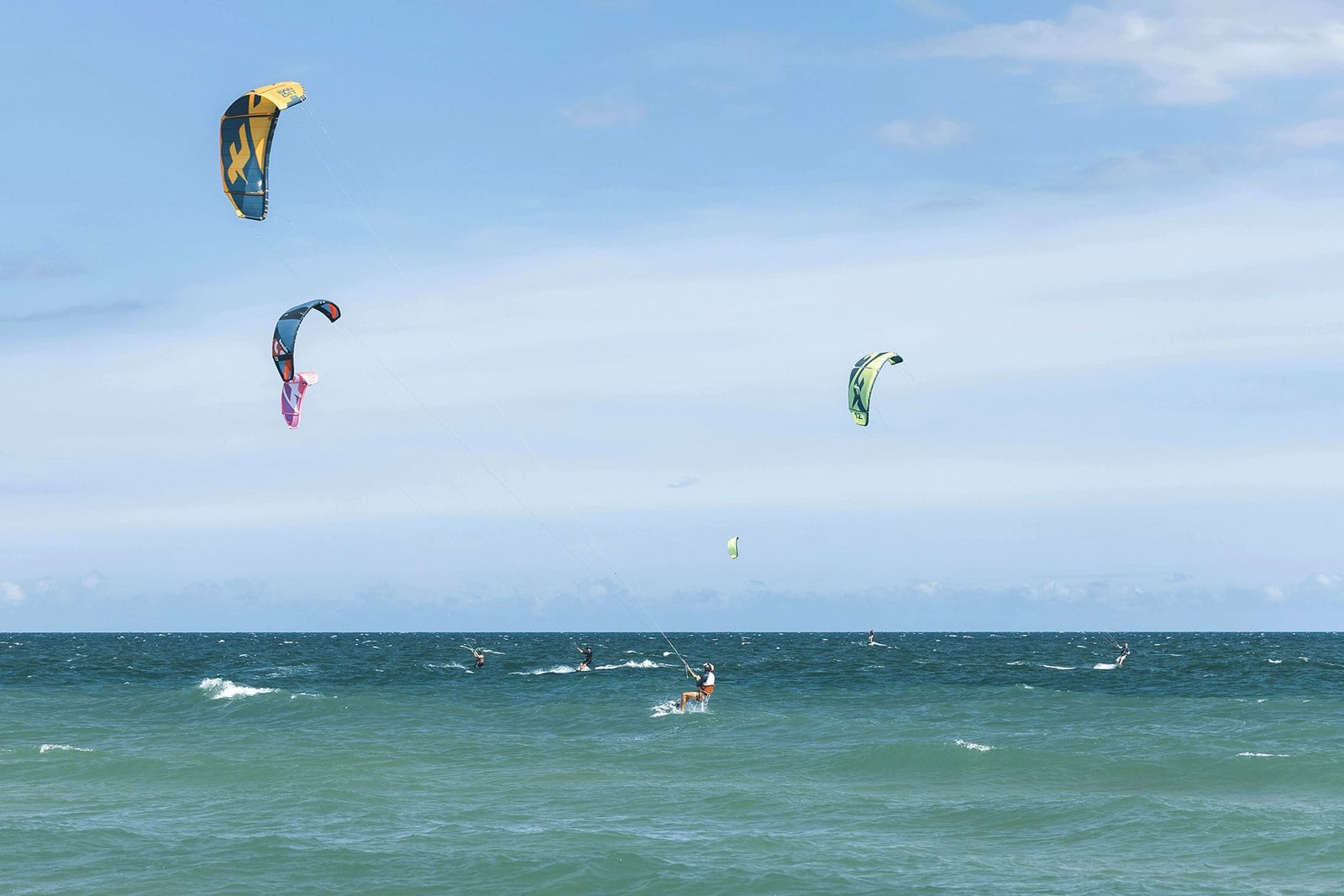
Windsurfing
Before kitesurfing arrived, windsurfers had already discovered Sal. The ION CLUB, operating since 1985, maintains two centres that reflect the sport’s evolution on the island. Their Santa Maria location caters to beginners with its protected bay and steady side-shore winds. The Ponta Leme centre, at the eastern edge of town, offers stronger winds and wave access for advanced sailors.
The same trade winds that power kitesurfers work equally well for windsurfing. The key difference here lies in its accessibility. Windsurfing requires more initial strength and balance. However, the learning curve is often more gradual. The equipment has undergone significant evolution over the past few years. Modern boards and new, light sails make the sport much more accessible. Rental packages start at €60 per day, with weekly rates offering better value.
Surfing
Surfing on Sal operates in the shadow of kitesurfing but offers excellent conditions without the crowds found at more famous destinations. The island receives consistent North Atlantic swells from October to March, producing waves that average 1-2 meters in height, with larger sets occurring during winter storms.
Ponta Preta works for surfing too, though most surfers leave it to the kitesurfers when the wind picks up. Early morning sessions, before the trade winds arrive, offer the best conditions. Santa Maria’s beach breaks provide a nice and gentle option for beginners, while Monte Leão’s rocky point break challenges intermediate surfers.
Board rentals cost €20-€30 per day. Several shops in Santa Maria stock equipment, though the selection is limited compared to major surf destinations. Lessons typically run for €40-60 for two hours and are usually conducted in the morning when weather conditions are most manageable.
Diving & Snorkelling
Sal’s underwater landscape amazes. Really. It contrasts sharply with the island’s desert-like surface. Visibility often exceeds 30 meters, revealing volcanic rock formations, caves, and swim-throughs populated by Atlantic and tropical species. The island sits at a convergence point for marine life, resulting in unusual biodiversity.
Regular sightings include sea turtles, rays, and moray eels. Nurse sharks rest in caves during the day. Between February and May, whale sharks migrate through the area. Humpback whales appear from March to May. These seasonal visitors add excitement to an already rich diving environment.
Multiple dive centres operate from Santa Maria, each offering similar services. PADI Open Water courses cost €350-450 and take four days. Single dives cost €35-50, with packages offering a reduced per-dive rate. Most operators visit sites around the island depending on conditions, from the cave systems of Buracona to the drop-offs near Murdeira Bay.
Jet-skiing
Jet‑skiing offers visitors an exhilarating way to explore the island from its vibrant shoreline. Jet‑ski tours typically depart from Santa Maria, where operators such as Zebrajet, situated next to the pier, offer guided rides along the coast, taking in views of Praia de Santa Maria, Ponta Preta, and Kite Beach. Excursions often last either 30 or 60 minutes, with inclusive transfers, life‑jackets and safety briefings provided.
Riders can enjoy the freedom of solo or tandem experiences and, depending on the operator, might spot dolphins playing alongside the jet‑skis during the ride. This activity combines adrenaline, spectacular coastal scenery and ease of access — making it a distinguished highlight among Sal’s water-based offerings.
Bodyboarding and Stand-Up Paddleboarding (SUP)
Sal Island offers a delightful combination of bodyboarding and stand-up paddleboarding, each with its own appeal.
Bodyboarding, where riders lie prone on a compact foam board using swim fins to catch waves, is a lively and accessible water sport. Sal’s renowned reef breaks — especially at places like Ponta Preta — can produce powerful shorebreaks and barrel sections that suit bodyboarders of intermediate to advanced skill levels.
On the other hand, stand-up paddleboarding (SUP) offers a calmer, more scenic experience. The tranquil waters of Praia de Santa Maria and sheltered Murdeira Bay provide idyllic conditions for beginners and casual paddlers.
Several local providers, such as SurfHub and ION Club, offer tours — typically led by qualified instructors — teaching you to paddle while guiding you along the bay, offering coastal views, and even providing glimpses of marine life and local fishermen at work.
Land Adventures
Quad Biking
Quad biking has become Sal’s signature land activity, and for good reason. The terrain seems designed for it — hard-packed sand, open desert, and coastal tracks that standard vehicles can’t navigate. Quad tours depart from Santa Maria daily, with several operators offering very similar routes at competitive prices.
The two-hour southern tour (€70-90) covers the essentials, including Santa Maria’s salt flats, Kite Beach, and the Serra Negra viewpoint. It provides a taste of off-road riding without committing to a half-day adventure. The four-hour island tour (€120-150) adds significantly more, including Terra Boa’s desert mirage, Pedra de Lume’s crater, and Shark Bay. This comprehensive option shows Sal’s geographic diversity — from beaches to volcanic landscapes to salt mines.
Operators require valid driving licenses and won’t budge on this requirement. The minimum age for drivers is 18. However, children from the age of 6 can ride as passengers. Groups are limited to 8-10 quads with multiple guides ensuring safety. The pace accommodates different skill levels, though some fitness helps when navigating sandy sections.
Buggy Tours
Buggies offer more power and stability than quads, with 500cc or 1000cc engines handling Sal’s varied terrain. The vehicles seat two people side by side, making them popular with couples. The experience differs from quads — less physically demanding but equally exciting.
Day tours (€205 per buggy) follow similar routes to quad excursions but can access some areas quads cannot. The powerful engines make short work of steep dunes and rocky sections. Night tours (€180 per buggy) offer a completely different experience. The desert takes on an otherworldly quality after dark, with stops for stargazing and beach barbecues.
Safety equipment includes helmets, goggles, and racing harnesses. Operators provide brief training sessions, though the automatic transmissions make buggies easier to handle than manual quads. Tours run year-round, though morning departures during summer avoid the worst heat.
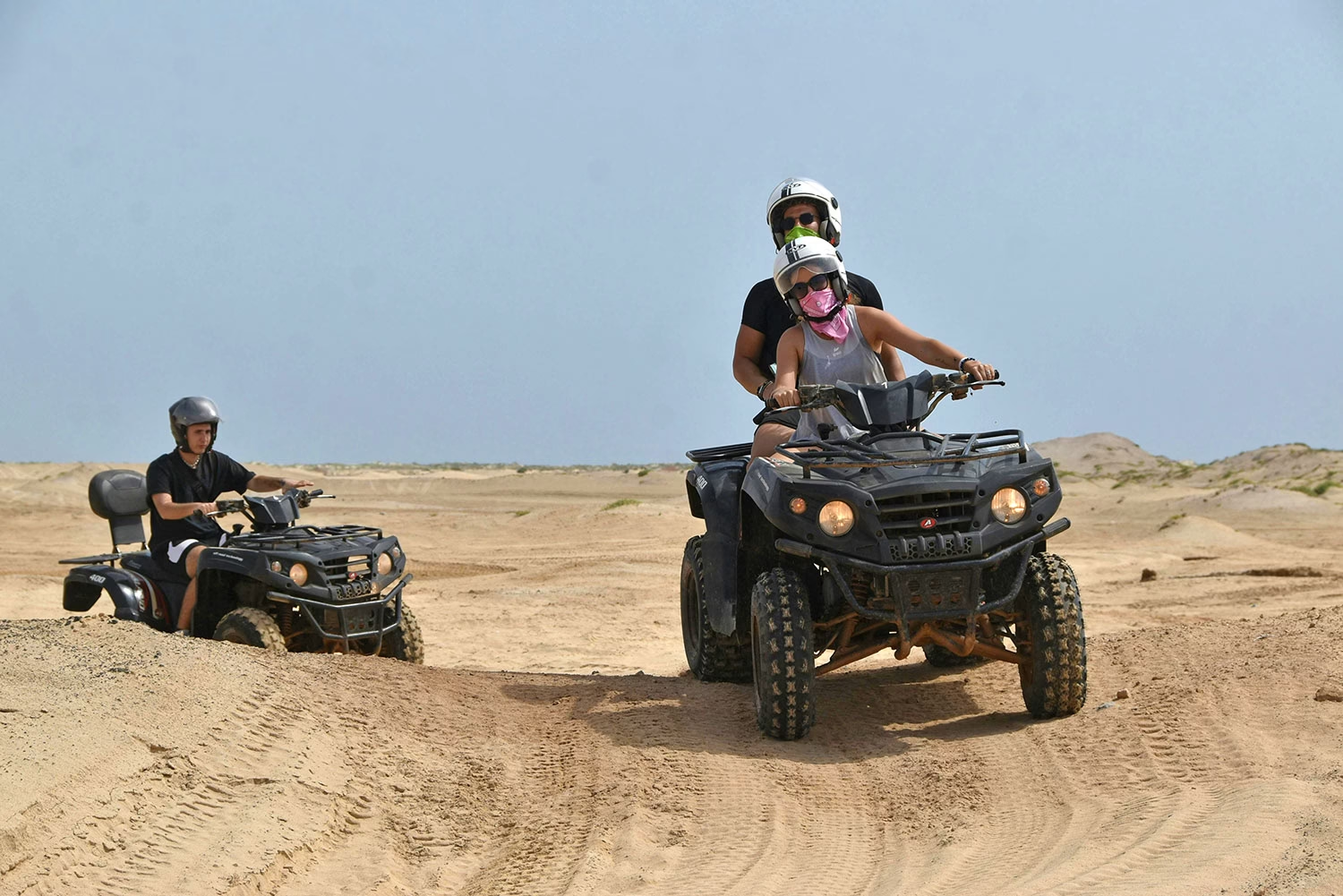
Zipline
Nestled at the summit of Serra Negra, the Zipline Cabo Verde offers one of Sal Island’s most exhilarating land‑based adventures. Participants are collected from Santa Maria and taken via 4×4 to the trailhead, where they embark on a short but rewarding walk to the launch point. Once harnessed, you hurtle along a cable over 1,000 metres long at speeds approaching 100 km/h—soaring above an otherworldly landscape of desert, cliffs, golden sands and the Atlantic Ocean.
After the ride, the atmosphere turns festive, with guests enjoying Cape Verdean music, traditional dances, and local aperitifs as part of the experience. Reviews frequently highlight the uplifting ambience: “staff were super nice and fun”, “10/10 would go again”, and “all in all a great activity”
Horseback Riding
Horseback riding on Sal links the island’s past — when horses and donkeys were the primary mode of transportation — with its present-day tourism. The horses, mainly Lusitanos, Berbers, and Arabian crosses, are well-suited to the climate and terrain. Their sure-footedness on sandy and rocky ground makes them ideal for exploring areas vehicles can’t reach.
Four main trails operate from stables near Santa Maria. The one-hour Salt Flats trail (€50) is suitable for beginners, following flat terrain through historic salt pans where workers still harvest salt using traditional methods. The Beach Ride (€60) adds excitement to your ride, allowing you to trot along the waterline and through shallow waves.
Experienced riders prefer the 1.5-hour Kite Beach trail (€70) or the two-hour Serra Negra trail (€80). These longer rides include cantering and galloping sections for those comfortable at speed. The Serra Negra route combines multiple terrains — salt flats, beaches, and the edges of the nature reserve where endemic birds nest.
Groups are limited to eight riders, accompanied by multiple guides. Private rides can be arranged for those wanting a more personalised experience. All rides include hotel pickup, helmets, and safety briefings. The horses are well-trained and accustomed to tourists, though riders should honestly assess their abilities when choosing trails.
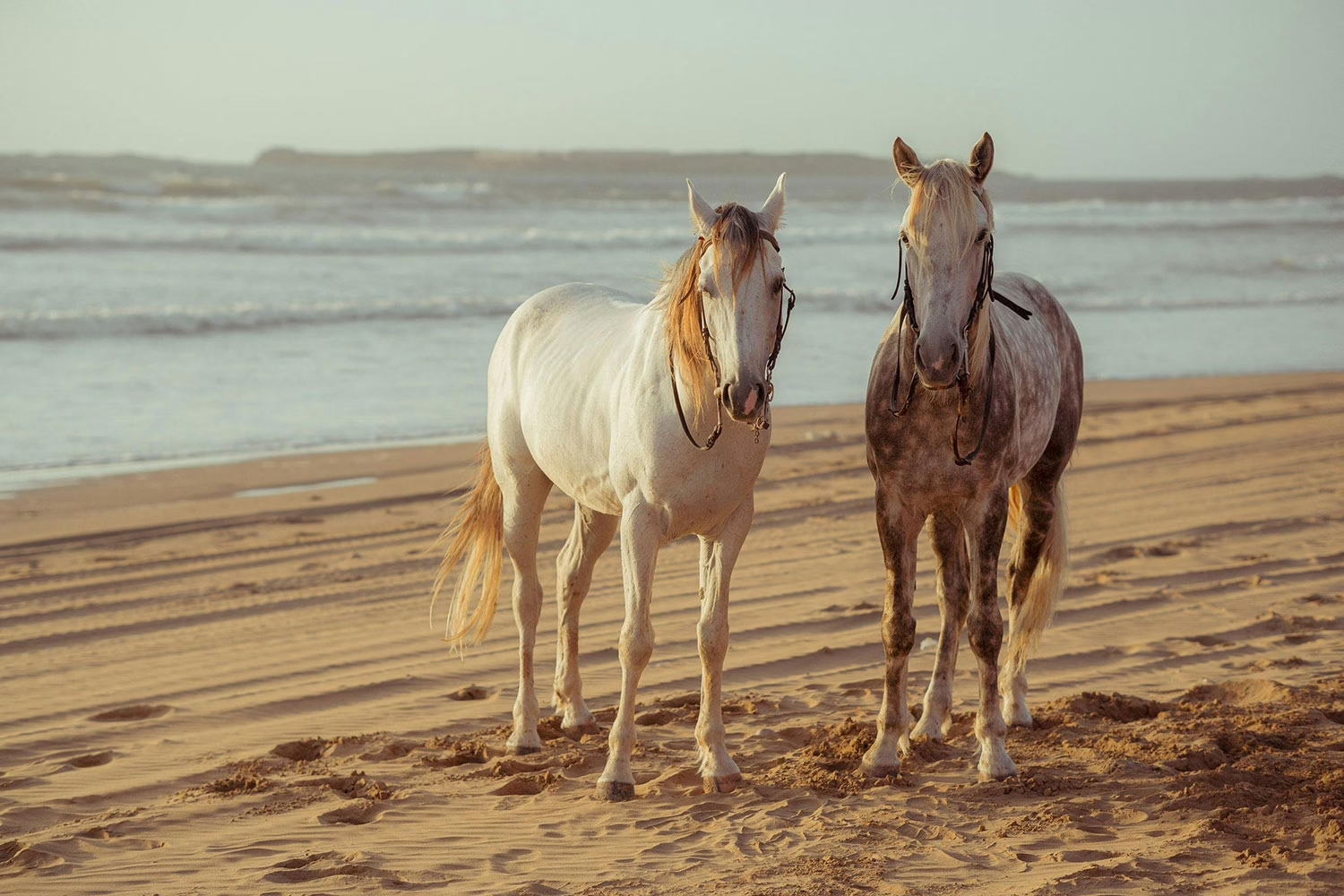
Natural Wonders
Pedra de Lume: Floating in a Volcano
Pedra de Lume achieves something unique — it’s the world’s only salt mine inside an extinct volcano crater. The experience starts with the approach, driving up the volcano’s flanks before descending into the crater, where white salt crystals coat everything like snow. The lake in the centre contains water with 26% salinity, which is higher than that of the Dead Sea.
Floating here is involuntary. The salt concentration makes sinking impossible. Visitors recline in the water, some reading books or newspapers for photo opportunities. The mineral content is supposedly beneficial, although most people come for the novelty. The site remains a working salt mine, with extraction continuing alongside tourism.
Entry costs €5. Facilities include basic changing rooms and showers (€1) to rinse off the salt. Bring water shoes — the salt crystals are sharp — and avoid shaving beforehand as the salt water stings fresh razor burn intensely. The experience lasts about an hour, though the memory of floating in a volcano lasts much longer.
Blue Eye Cave in Buracona
Buracona’s Blue Eye represents one of those natural phenomena that seems too perfect to be natural. Between 11 AM and 1 PM, when the sun reaches the right angle, light penetrates an underwater cave opening and creates an ethereal blue glow in the pool above. The effect varies with conditions — calm, clear days produce the most vivid blue.
The site includes more than just the Blue Eye. Natural pools carved into volcanic rock provide a serene swimming experience when the ocean is calm. Waves crash dramatically against the rocks, sending spray high into the air. A small botanical garden showcases endemic plants, while an observation tower provides coastal views.
Entry costs €3, and timing matters.
Arriving outside the optimal window means missing the blue effect entirely, though the swimming pools and coastal scenery still merit a visit. The 30-minute drive from Santa Maria passes through Sal’s interior, showing the island’s desert landscape.
Shark Bay: Lemon Shark Encounters
Shark Bay flips the usual human-shark dynamic. Here, people wade into shallow water to meet juvenile lemon sharks in their habitat. The sharks, typically 60-90 centimetres long, hunt small fish in the warm, shallow waters. They’re accustomed to human presence but remain wild animals going about their business.
Marine biologists often accompany visits, explaining shark biology and conservation. The juveniles pose no threat — they’re more interested in fish than feet. Adult sharks remain in deeper water, occasionally visible as fins cutting through the surface. The experience costs €3-5, including a guide, with water shoes available for rent.
Morning visits offer calmer water and better visibility. The bay is 10 minutes from Pedra de Lume, making it easy to combine both attractions. Sessions last 30-45 minutes, although the actual shark encounter may be brief, depending on their feeding patterns.
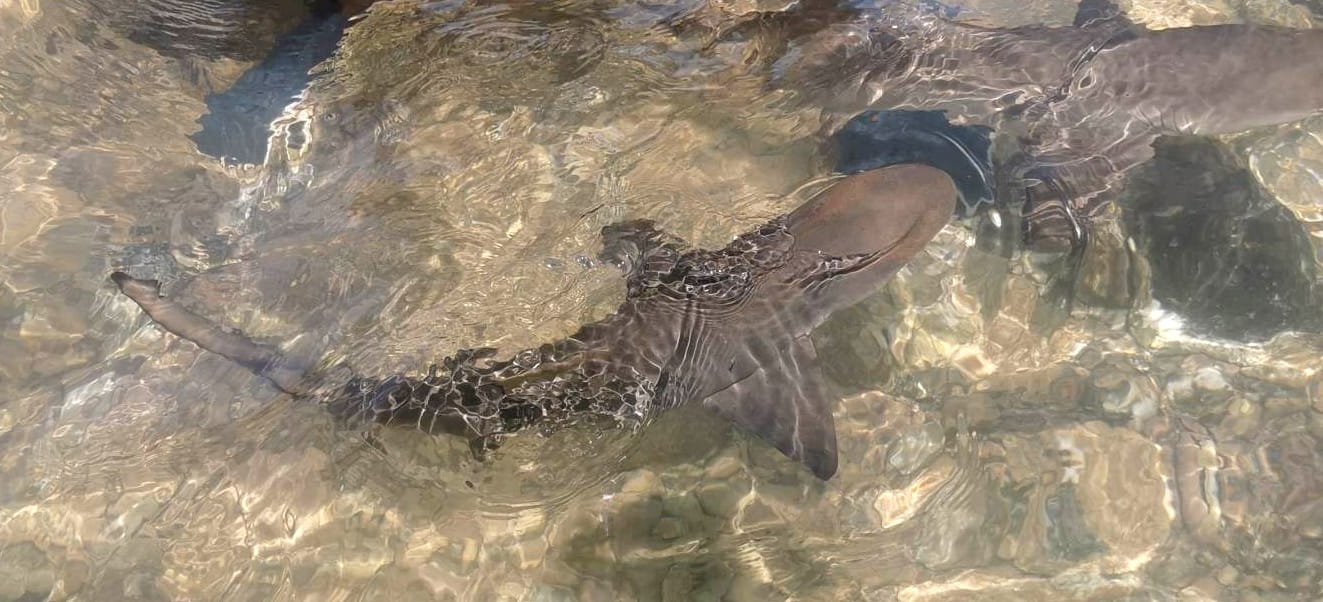
Terra Boa: Desert Mirage
Terra Boa demonstrates the desert’s capacity for illusion. The flat expanse creates a mirage effect where the horizon appears to hold a vast lake. The “water” retreats as you approach, maintaining its distance in defiance of logic. It’s a simple phenomenon — heat refracting light — but impressive nonetheless.
The journey to Terra Boa matters as much as the destination. The route crosses Sal Island’s interior, passing through volcanic rocks and sparse vegetation adapted to the island’s minimal rainfall. The isolation is complete; no buildings or roads interrupt the landscape. Tour guides time visits for maximum mirage effect, typically late morning when the sun heats the ground sufficiently.
Pachamama Eco Park – Viveiro Botanical Garden & Zoo
Nestled amidst the arid landscape of Sal Island, the Pachamama Eco Park — locally known as the Viveiro Botanical Garden — serves as a verdant oasis in the desert. Open daily from 10:00 to 18:00, the park welcomes visitors for a modest entry fee of approximately €5 per person and is best enjoyed over the course of an hour or two.
Within its tranquil confines, you’ll encounter a vibrant collection of flora — from towering palms and vibrant cacti to themed garden areas — alongside rescued animals, including peacocks, monkeys, donkeys, goats, turtles, and parakeets. A cosy café offers light refreshments, inviting you to pause, unwind, and appreciate the surroundings.
Beyond its botanical and zoological delights, Pachamama stands as a beacon of sustainability, promoting environmental stewardship through initiatives such as recycling, water reuse, and creating a green sanctuary in a water-scarce environment. Whether you’re seeking a peaceful nature stroll or a gentle family outing, this botanical haven offers a refreshing contrast to the island’s sunny shores and water-based pursuits.
Wellness
Resort Spas
Sal’s larger resorts have invested heavily in spa facilities, recognising that adventure-seeking guests also want relaxation options. The Hilton’s Eforea Spa features a mineral sand massage bed with light therapy — technology that seems at odds with the island’s rugged nature but proves surprisingly popular. Access to thermal areas costs 1,000 CVE per hour, with treatments ranging from €60 to €150.
The Meliá Llana’s YHI Spa takes a different approach, emphasising traditional treatments with local touches. Their signature massage incorporates techniques from Cape Verdean healers, although most guests opt for familiar Swedish or deep-tissue options. The spa offers access to sauna and Turkish bath facilities, along with treatments, a welcome addition given the separate charges at many facilities.
These resort spas maintain international standards, with trained therapists and quality products. Prices reflect this, running higher than those of independent operators but offering consistency and convenience. Many guests like to book spa sessions for evenings or for their final day, to soothe muscles tired from water sports and quad biking.
Independent Spas
Santa Maria’s independent spas provide similar services at lower prices. Beauty Plaza has built a strong reputation among repeat visitors. Hour-long massages cost €30, manicures €22 — prices that encourage multiple visits rather than single splurges. The atmosphere is more casual than that of resort spas, but the quality often surprises many guests.
These smaller operations often provide more personalised service. Therapists remember returning clients’ preferences. Appointments can be flexible, accommodating last-minute bookings when resorts are full. The trade-off comes in facilities — don’t expect thermal circuits or infinity pools. But for straightforward massage and beauty treatments, independent spas deliver value.
Yoga
Morning yoga on Santa Maria beach has become increasingly popular. Sessions start at 7 AM, before the wind picks up and the beach fills with kitesurfers. The combination of ocean sounds, sunrise, and gentle movement appeals to guests seeking balance between action and relaxation. Yoga classes are also organised in other places of the island, for example, in the shadows of the botanical garden in Pachamama Eco Park. For current schedules, please ask the guides or hotel staff for the most up-to-date information.
Cabo Verde Wellness leads the scene, offering drop-in classes for €15 and private sessions for €40. The instructor, originally from Ireland, has spent 20 years on Sal and brings both technical knowledge and understanding of the island. Classes accommodate all levels, offering comfortable modifications for beginners as well as special challenges for experienced practitioners.
Guided Tours
Sal is small enough to explore it independently. However, guided tours can provide stories and contexts that transform sights into much more profound and more interesting experiences. Full-day island tours (€70-100) visit approximately 8-10 attractions in around 6-7 hours, including lunch at a local restaurant.
The itinerary typically includes:
Guides share stories that aren’t in guidebooks. They explain why salt mining collapsed, how tourism transformed fishing villages, and what life was like before the airport brought European visitors. They know when the Blue Eye will be bluest, where to find the best grogue, and which restaurants serve authentic cachupa rather than tourist versions.
Half-day tours (€40-60) focus on either the north or south, allowing more time at each stop. These work well for families with young children or anyone preferring a relaxed pace. Private tours cost more but allow customisation — spending extra time at beaches, skipping attractions that don’t interest you, or adding stops at local markets.
Specialised Experiences
Turtle watching from July to October provides one of Sal’s most meaningful experiences: Loggerhead turtles, an endangered species globally, nest on the island’s beaches. Night tours (€35-50) led by Project Biodiversity guides witness this ancient ritual while minimising disturbance. Guides use red lights that don’t disorient turtles and maintain safe distances.
The experience requires patience. Turtles don’t follow schedules, and some nights produce no sightings. When successful, watching a massive turtle laboriously dig her nest and deposit eggs connects visitors to nature in ways that day tours cannot. The guides’ passion for conservation adds depth, explaining the threats turtles face and conservation efforts underway.
Catamaran cruises offer a different perspective on Sal. Half-day trips (€50-70) include snorkelling stops at sites which are inaccessible from the shore. The boats anchor in protected bays where tropical fish congregate around coral formations. Full-day options add nice beach barbecues and more extensive sailing. Most cruises include open bars, though the combination of sun, sea, and alcohol requires moderation.
Dining Scene
Traditional Cuisine
Cachupa, Cape Verde’s national dish, is featured on every restaurant menu but varies significantly in its preparation. The basic recipe — corn, beans, vegetables, and meat or fish slow-cooked together — reflects the islands’ African and Portuguese influences. Local versions might include linguiça sausage, fresh tuna, or sweet potato.
Seafood dominates menus for apparent reasons. Tuna appears everywhere, from seared steaks to raw preparations influenced by Japanese cuisine. Lobster, while pricier at €20-30, remains affordable compared to European prices. Local preparations keep things simple — grilled with garlic butter or served in tomato-based sauces that let the seafood flavours shine through.
Percebes (gooseneck barnacles) divide opinions. These prehistoric-looking crustaceans, harvested from rocks where waves crash hardest, have a taste that is concentrated ocean. At €15-20 per plate, they’re an acquired taste worth acquiring. Restaurants typically steam them, serving them with lemon and local bread.
Restaurant Evolution
Santa Maria’s restaurant scene has evolved from fish shacks to include Italian trattorias, sushi bars, and steakhouses. Yet the best meals often come from family-run establishments one block back from the beach. These places serve what Cape Verdeans eat: cachupa rica, loaded with meat, grilled fish caught that morning, and feijoada borrowed from Brazilian cuisine.
Beachfront restaurants charge a premium for their location, but sunset dining makes the cost worthwhile. Watching kitesurfers race across golden water while eating fresh lobster creates memories worth he extra euros. The key is choosing restaurants where locals eat lunch — if Cape Verdean workers are there at noon, the food is authentic and reasonably priced.
Reservations matter more than expected for a beach town. The best restaurants fill nightly during high season. Chez Pastis, run by an Italian who sources premium Brazilian beef, requires booking several days in advance. Even casual beach bars can get crowded when cruise ships dock or kitesurfing competitions draw large crowds.
Night Drinks and Music
Grogue, distilled from sugarcane, fuels Cape Verdean celebrations. The clear spirit packs 40-45% alcohol and goes down easier than expected — dangerously so. Locals drink it straight in small shots. Tourists often prefer ponche, a mix of honey and lime, as a way to create Cape Verde’s answer to the Brazilian caipirinha. The beer from local breweries is also very popular.
Live music is available nightly in Santa Maria. Musicians play morna, the melancholic style made famous by Cesária Évora, in restaurants and bars throughout the island. The music tells stories of saudade — a concept that combines longing, loss, and hope, perfectly capturing the Cape Verdean experience of isolation and migration.
